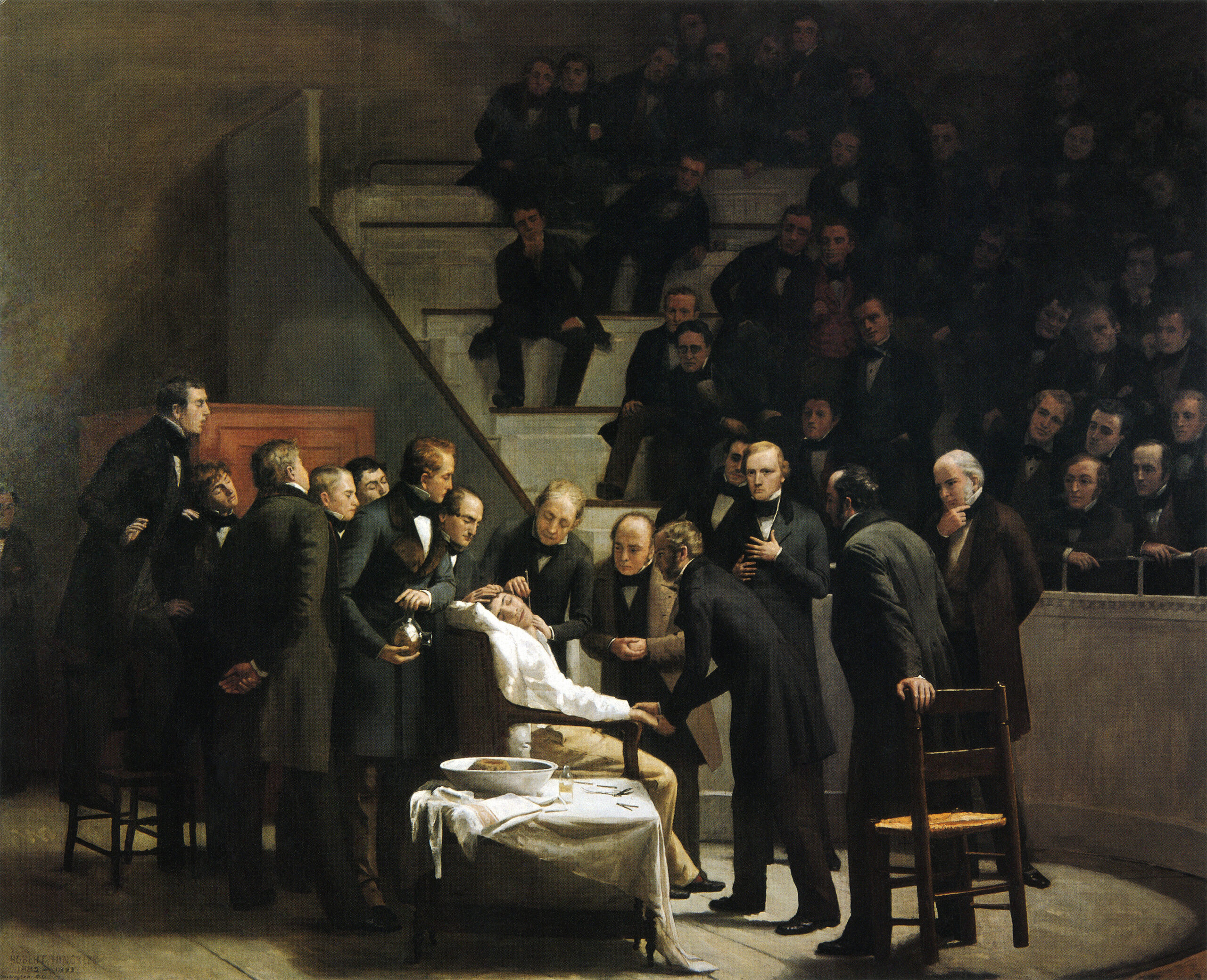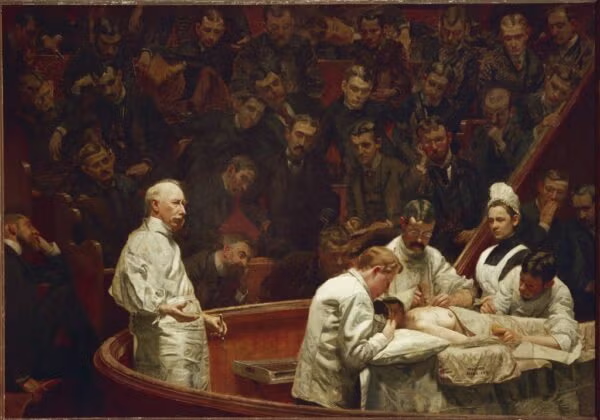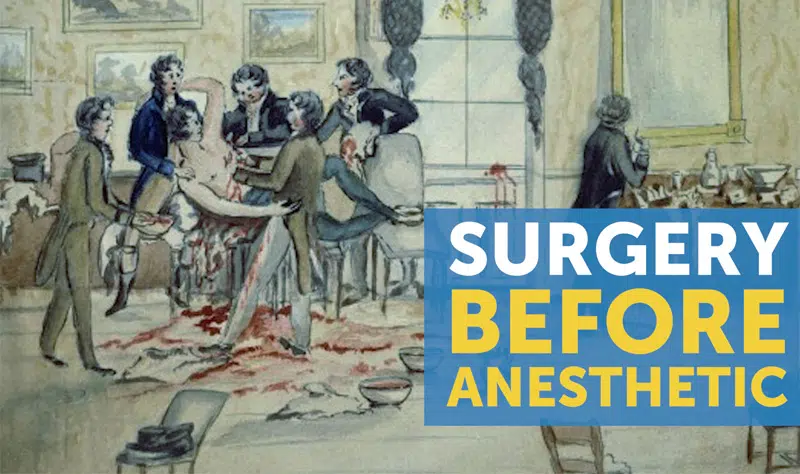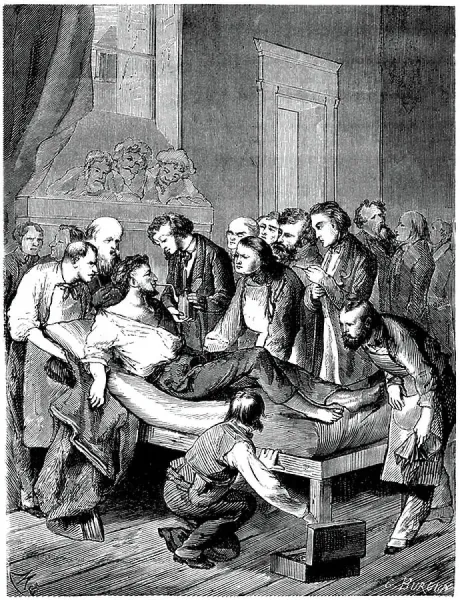“Surgery Without Mercy: Medicine Before Anesthesia”

Before the discovery and use of anesthesia in the 19th century, surgery was one of the most terrifying and brutal experiences a human could endure. The idea of being cut open, having bones sawed, or limbs amputated without any form of pain relief may seem unimaginable today. Yet, for thousands of years, that was the grim reality for patients and the daily work of surgeons. This article explores how doctors performed surgery in a time when patients were fully awake, how they managed pain, and how surgical practices evolved in the absence of anesthesia.
Surgery in the Ancient and Medieval World
Surgical practices date back to ancient civilizations. In Mesopotamia, Egypt, India, and Greece, physicians performed rudimentary operations—from trepanation (drilling holes in the skull) to amputations and wound suturing. Despite limited tools and knowledge of anatomy, some physicians, such as Sushruta in ancient India or Hippocrates in Greece, described surgical techniques with remarkable insight.
Pain was considered an inevitable part of the healing process. Some ancient doctors attempted to dull pain with natural remedies. Opium, alcohol, cannabis, and mandrake root were sometimes used as sedatives. However, these were inconsistently effective and rarely eliminated pain completely. In most cases, patients had no choice but to endure procedures while fully conscious.
The Brutal Reality of Pre-Anesthesia Surgery
By the 17th and 18th centuries, surgery was becoming more common—but still incredibly dangerous and excruciating. Surgeons had little understanding of infection, sterilization, or shock. Without anesthesia, the patient’s pain threshold and the surgeon’s speed were critical.
Operations were typically very quick, often lasting only a few minutes. Surgeons developed extraordinary manual dexterity, especially in procedures like amputations, where speed was a matter of life and death. A successful amputation in under 60 seconds was a mark of an elite surgeon.
To keep patients still, assistants or family members would often hold them down. Patients would be strapped to the table or have their limbs restrained. Screaming, writhing, and fainting from pain were common. In some cases, people died of shock from the agony alone.
Despite this, many survived. Some patients went willingly to surgery rather than die from wounds, tumors, or infections. Courage and desperation were often their only anesthetics.


Methods Used to Manage Pain Before Anesthesia
Even before modern anesthetics, doctors experimented with different ways to dull or distract from pain:
- Alcohol: Patients were often given liquor to dull the senses or make them drowsy.
- Opium and Laudanum: Derived from the poppy plant, these narcotics were given in limited quantities but had unpredictable effects.
- Ice or Cold Water: Used to numb areas of the body or reduce blood flow, sometimes with tourniquets.
- Herbal Remedies: Mandrake, henbane, hemlock, and cannabis were used across cultures for their sedative or hypnotic properties.
- Hypnosis or Mesmerism: In some 18th-century experiments, “animal magnetism” or hypnosis was claimed to reduce pain perception.
- Distraction and Talk: Surgeons would try to talk patients through the process to keep them conscious and cooperative.
- Physical Restraints: Ultimately, physical force was still the most common method to keep a patient still during excruciating procedures.
Risks and Mortality Rates
Without anesthesia, infection control, or blood transfusions, surgery was extremely risky. Many patients died from post-operative infections like gangrene or sepsis. Others suffered complications from bleeding, unsterile tools, or the trauma of the experience.
Even simple surgeries carried high mortality rates. As a result, surgery was considered a last resort, only attempted when death was likely without it.
The Turning Point: The Discovery of Anesthesia
The breakthrough came in the mid-19th century. In 1846, dentist William T.G. Morton publicly demonstrated the use of ether as an anesthetic in Boston. The patient underwent a pain-free operation to remove a neck tumor, and the world changed.
Soon after, chloroform and nitrous oxide (laughing gas) were introduced. Though early anesthetics had their own risks, the ability to perform surgery without pain revolutionized medicine. Surgeons could take more time, explore deeper into the body, and perform operations that had previously been unthinkable.
With the rise of anesthesia came aseptic techniques, improved surgical instruments, and the development of modern hospitals. Surgery was no longer an agonizing gamble—it became a respected, life-saving science.
Legacy and Lessons
The era before anesthesia is a stark reminder of how far medicine has come. The suffering endured by patients and the raw courage of early surgeons highlight both the limitations and resilience of human beings. It also underscores the importance of innovation, compassion, and scientific progress in medicine.
Today, thanks to anesthesia and centuries of medical advancement, millions of surgeries are performed safely and painlessly each year—something that would have seemed miraculous just two hundred years ago.





